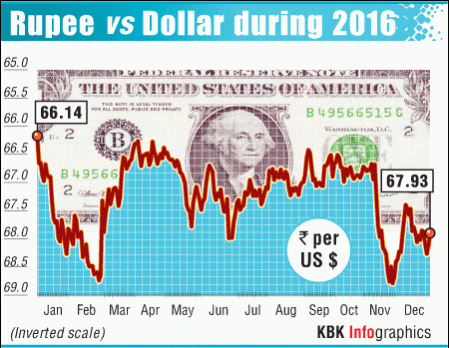
Reflecting the relative weaknesses in their economies, China and India saw their currencies fall but not at the same rate in calendar year (CY) 2016. While the Chinese yuan depreciated 6.6 percent, the Indian rupee fell 2.70 percent, against the US dollar, despite demonetisation and FCNR deposit redemption.
"In 2016, the onshore yuan lost 6.6 per cent against the greenback, marking the biggest annual drop since 1994," Hong Kong-based South China Morning Post(SCMP) reported.
On Tuesday morning, the yuan was trading at 6.95 to the US dollar in the spot market.
Read: Jinping downbeat on economic growth; Modi Govt bullish
The year was also significant with the dragon reconciling to a new normal of ~6.5 percent growth rate after years of runaway expansion while India held its head as the fastest-growing economy of the world.
India pipped China — after many years — to emerge as the fastest-growing economy of the world in CY2015, growing at 7.5 percent in comparison to China's 6.9 percent.
In terms of size, the two countries are poles apart. The Chinese economy is about $12 trillion, dwarfing India's approximately $2 trillion, according to IMF's World Economic Outlook 2016.

The Indian rupee, in addition to global headwinds, was also affected by uncertainty triggered by demonetisation of high-value currencies by Prime Minister Narendra Modi on November 8, 2016 and the redemption of FCNR deposits that were issued in 2013 to stem the sharp fall in the rupee.
The domestic currency faced heavy selling by foreign portfolio investors (FPIs/FIIs) during the year, especially during the last three months of CY2016.
The net sell position of FPIs in November and December was Rs 31,307 crore.
Though there is broad agreement that the note ban decision would hit growth rate for the December 2016 and March 2017 quarters, the Indian economy is still expected to end FY2017 (April 2016-March 2017) with a growth rate of about 7 percent, after the H1 (April-September 2016) expansion came in at 7.2 percent (7.3 percent in September quarter and 7.1 percent in June quarter).










